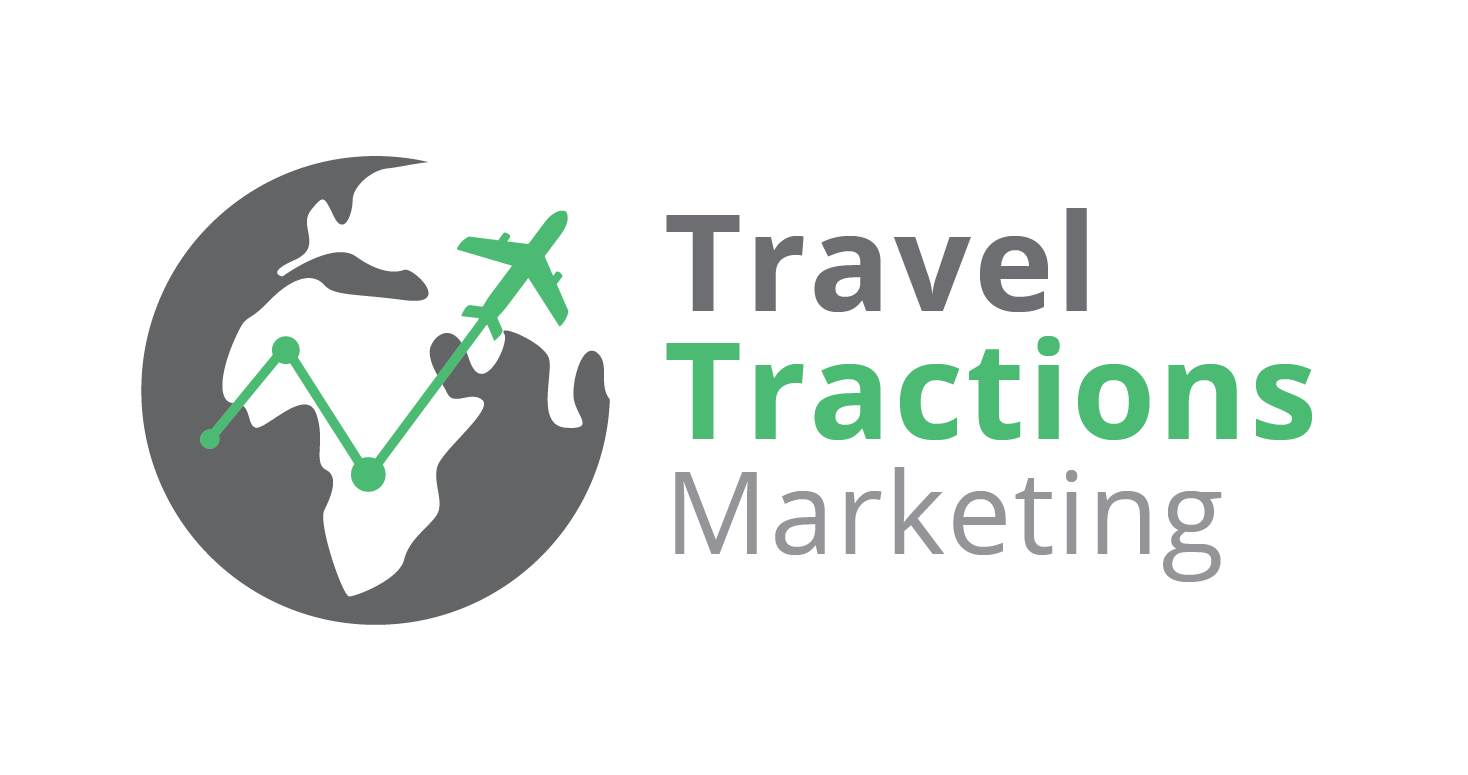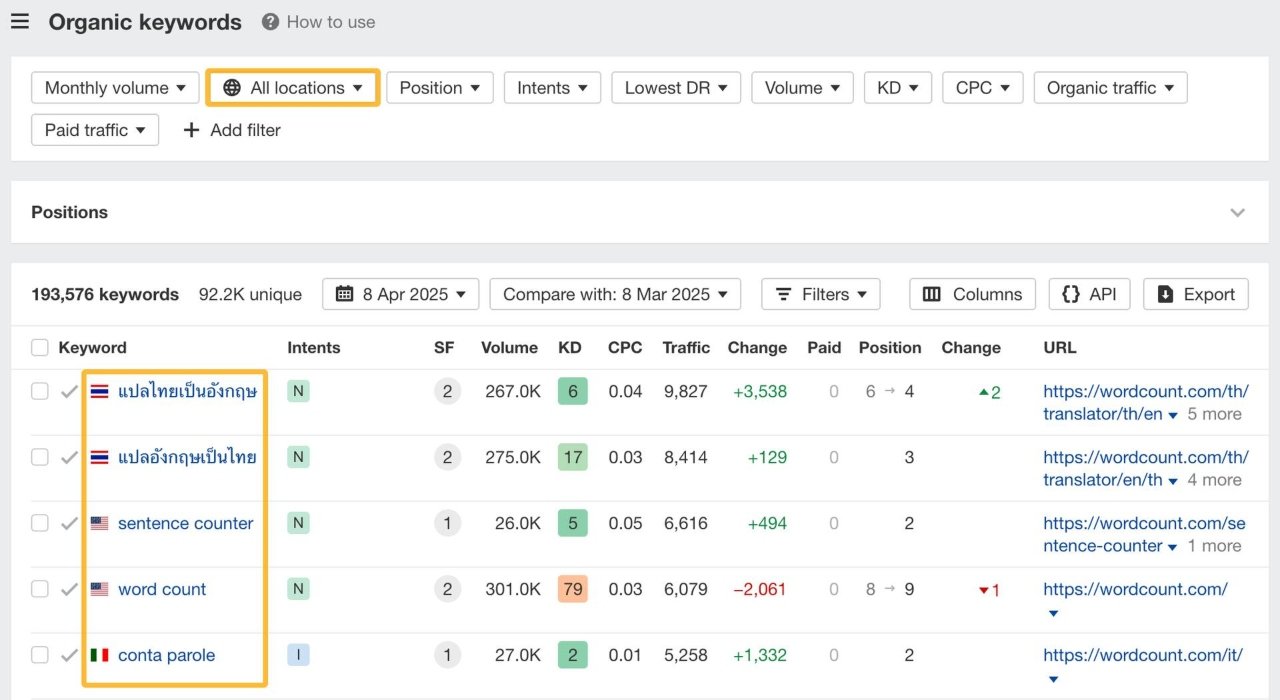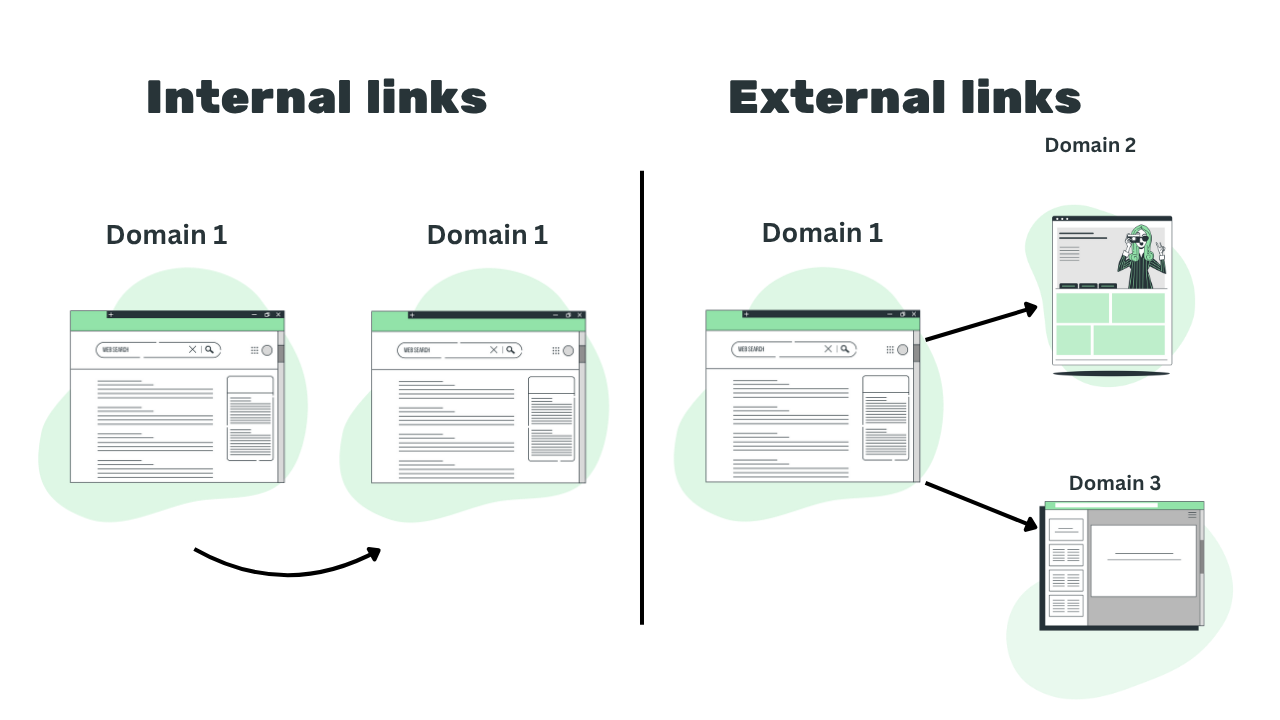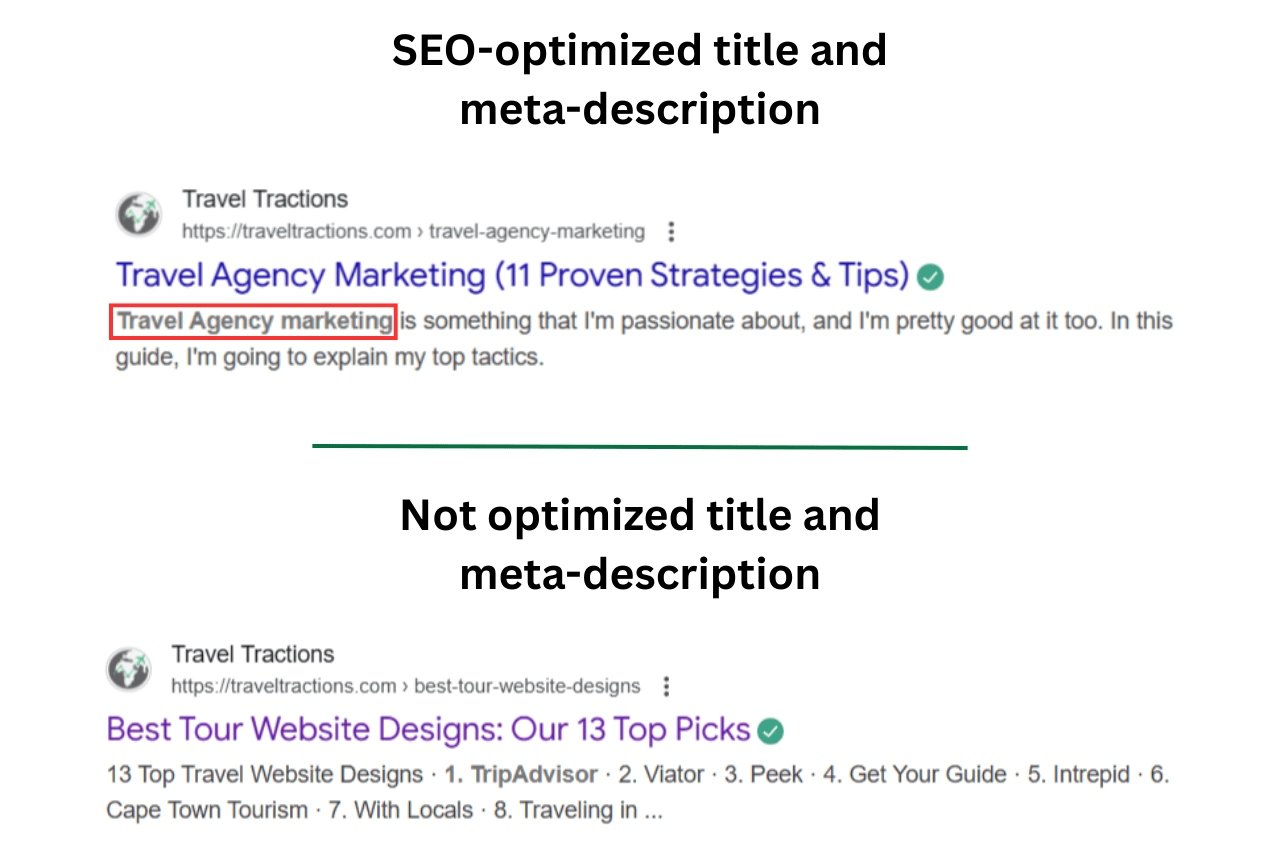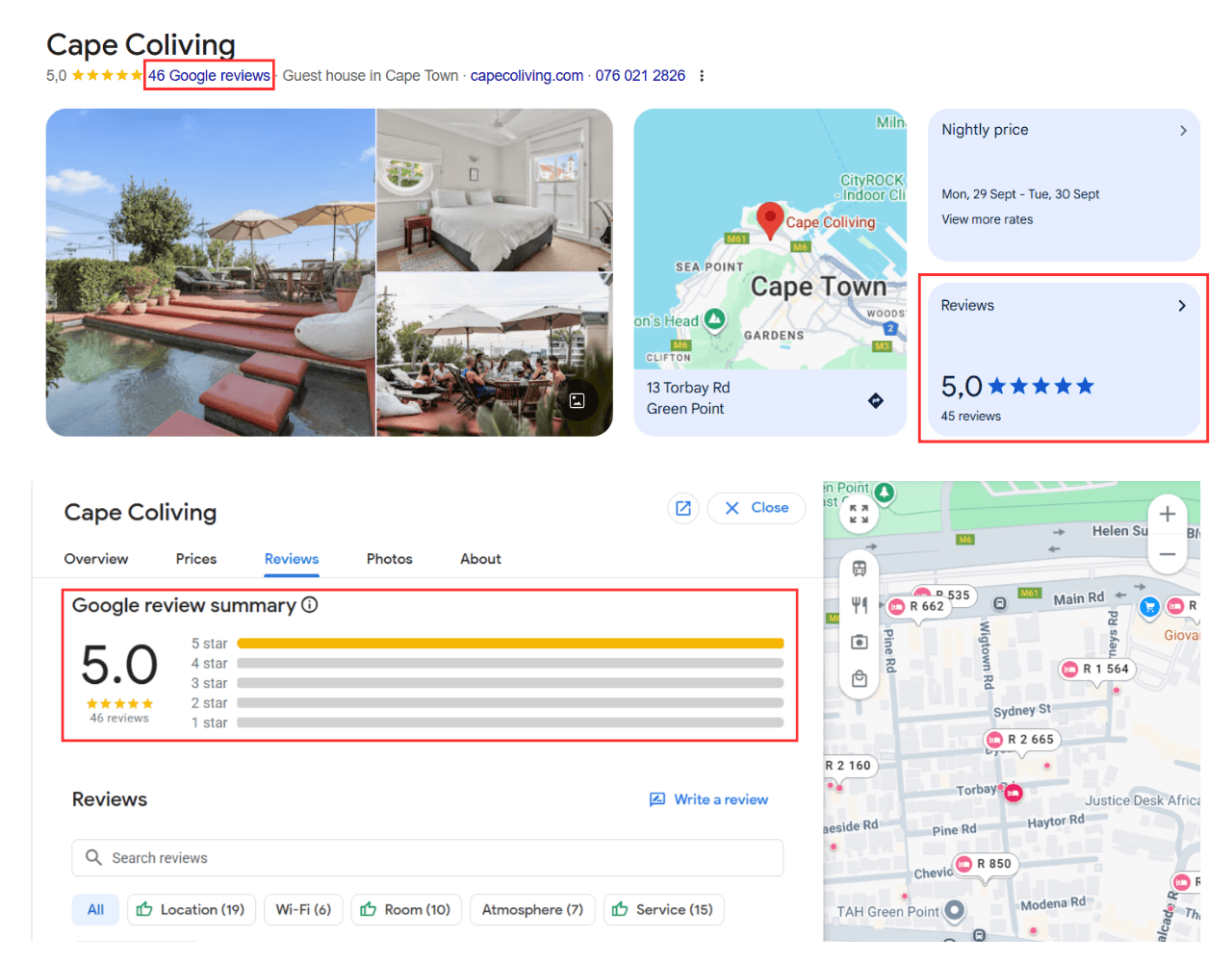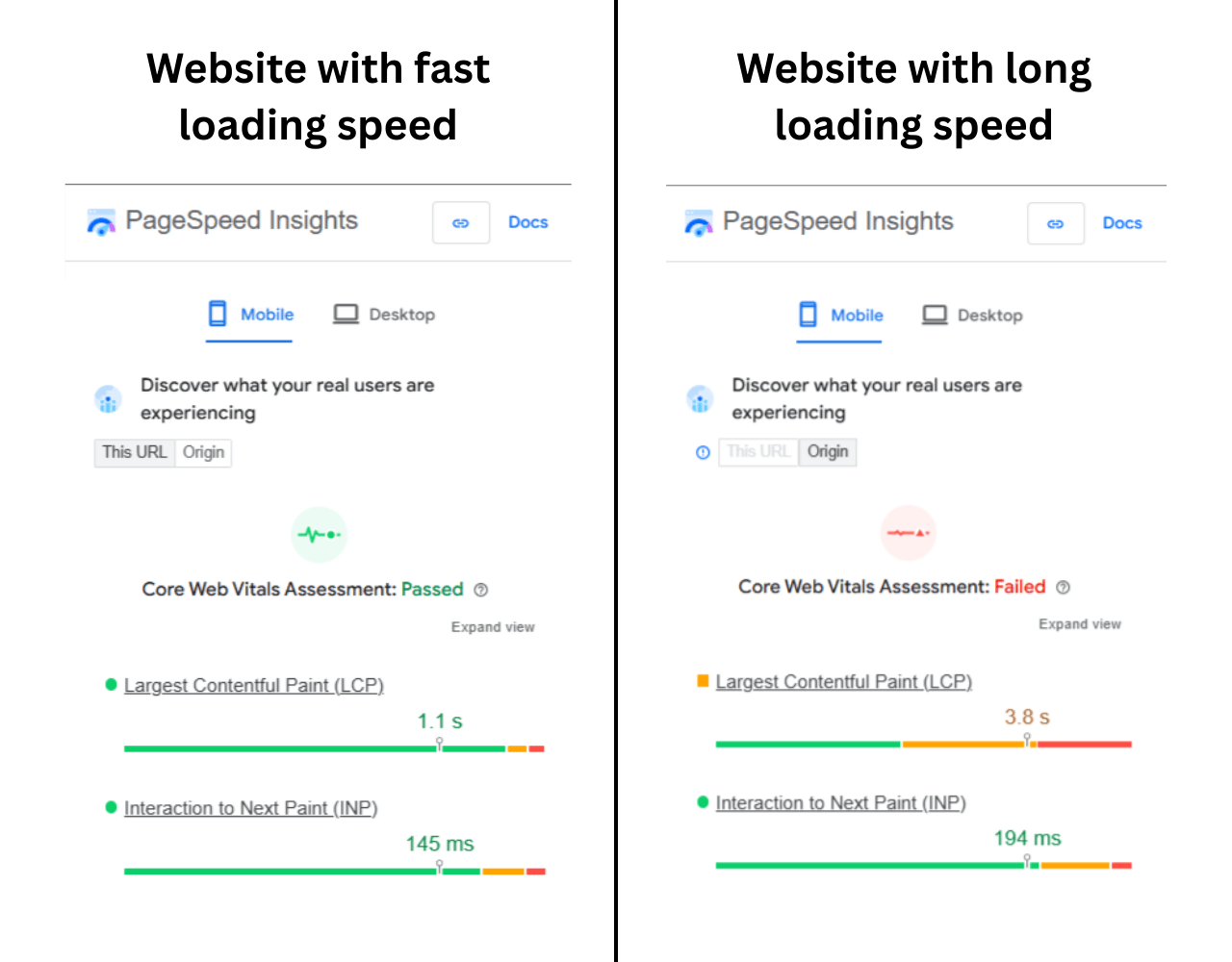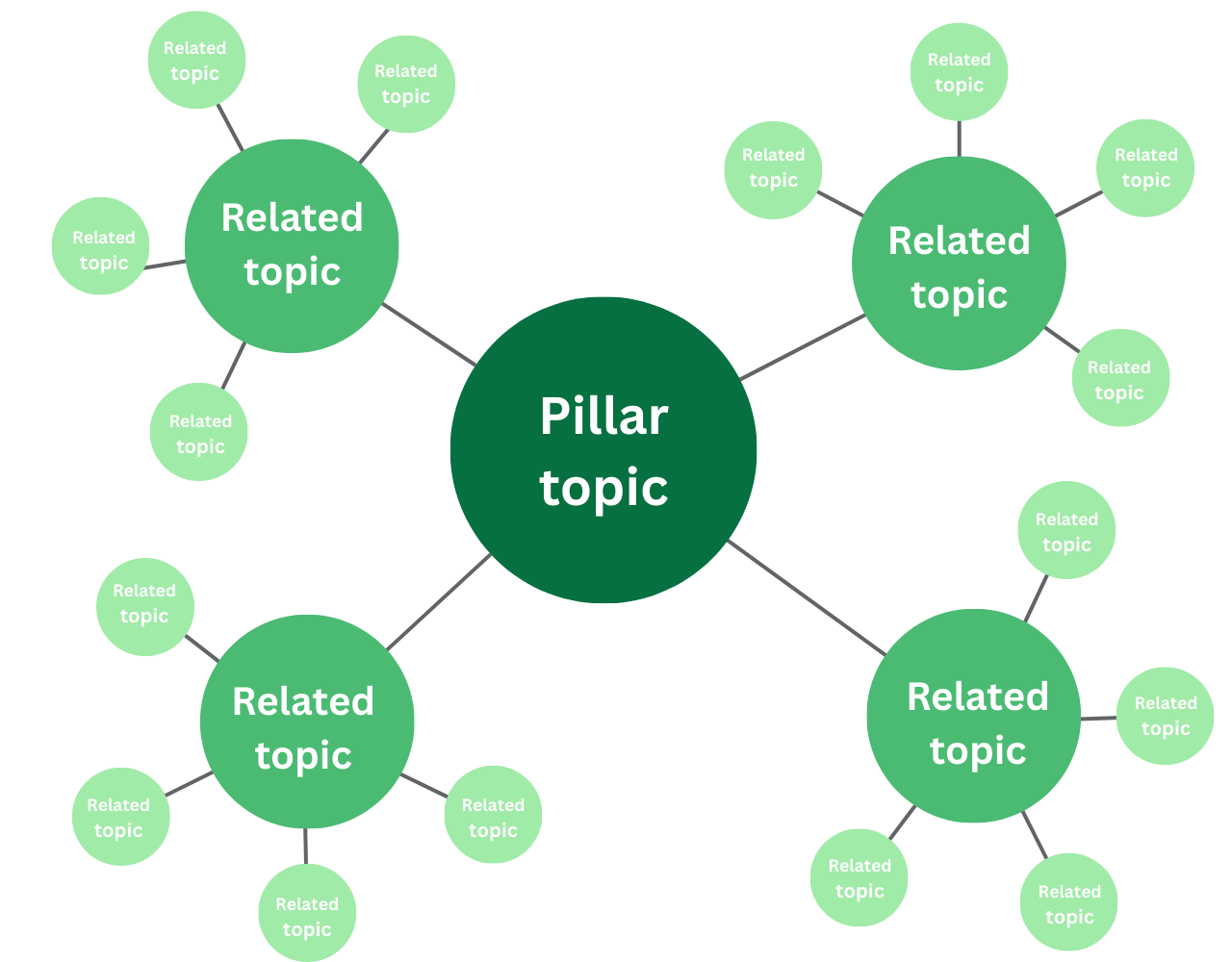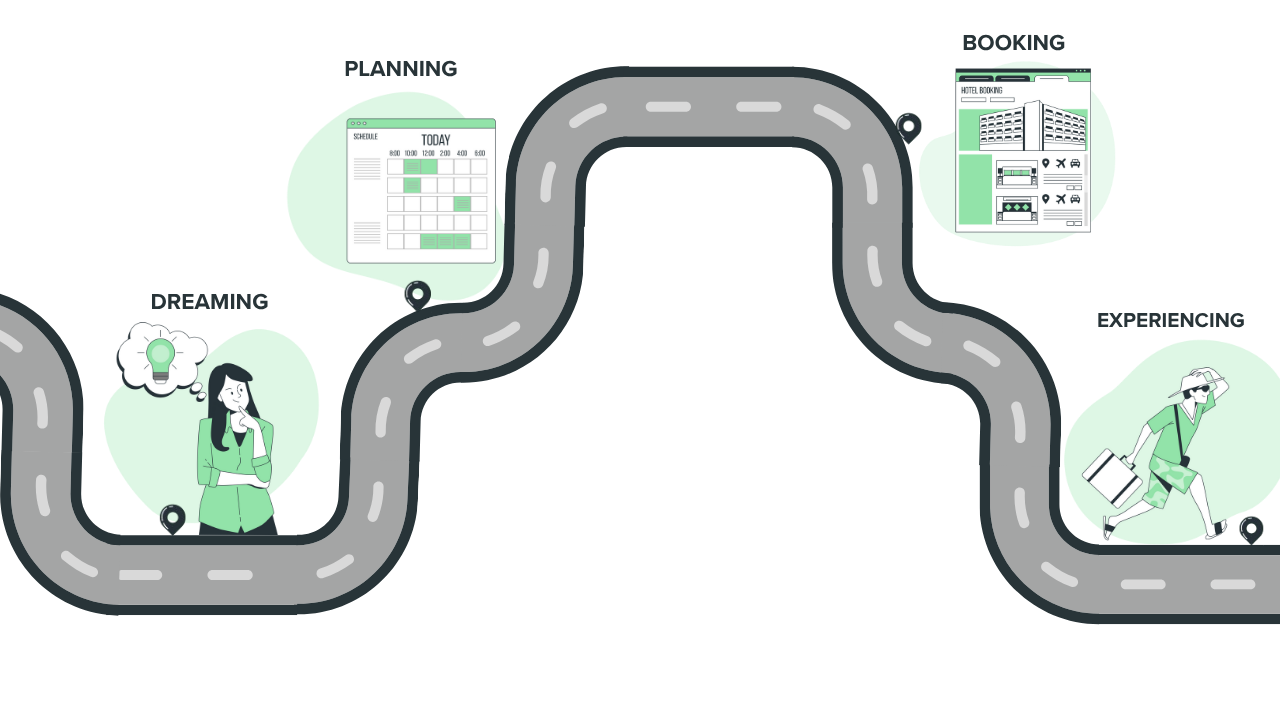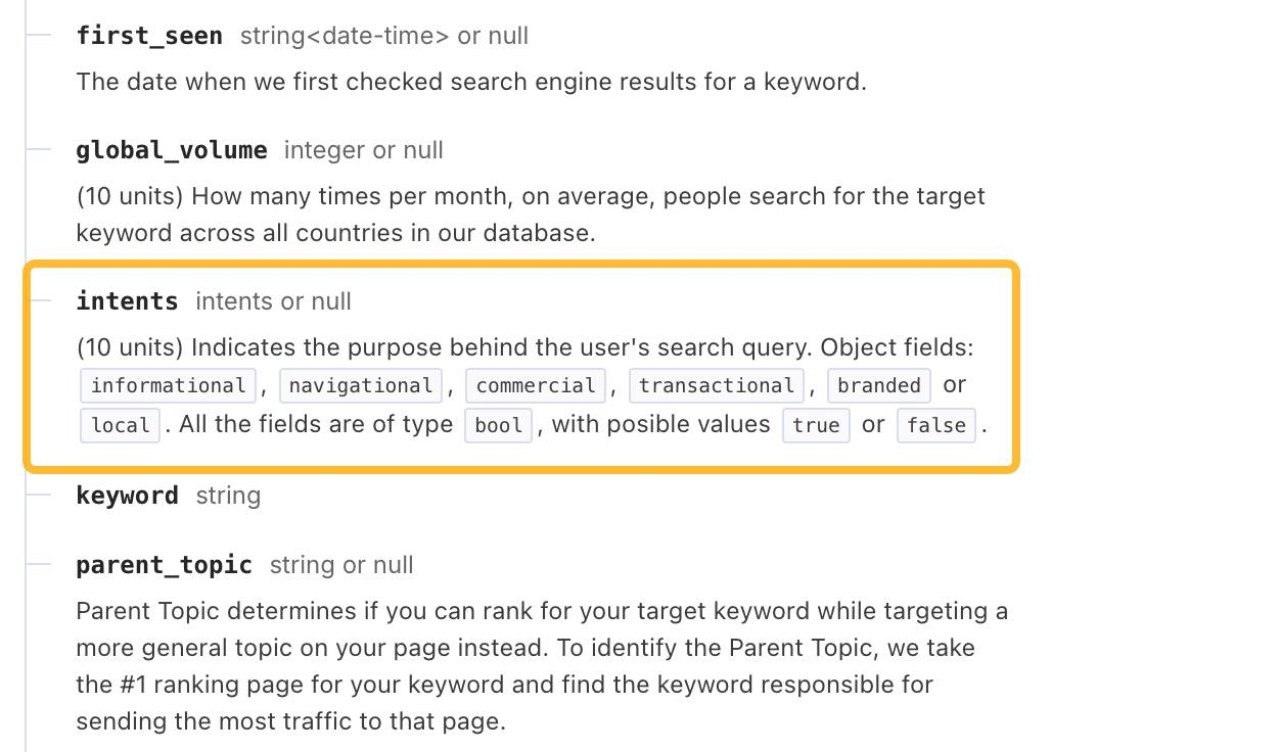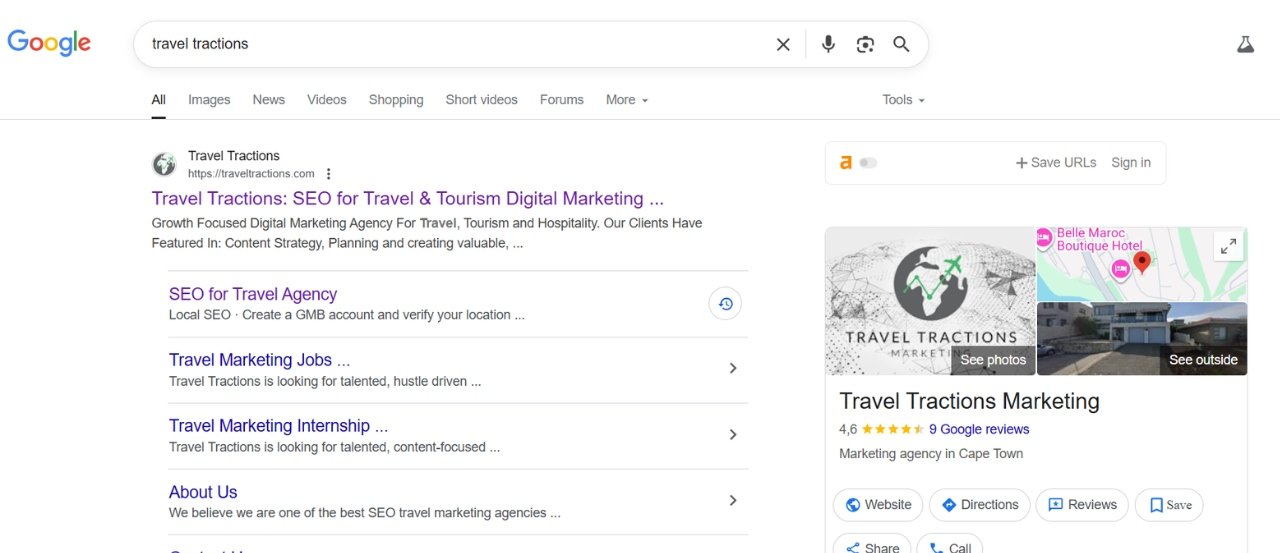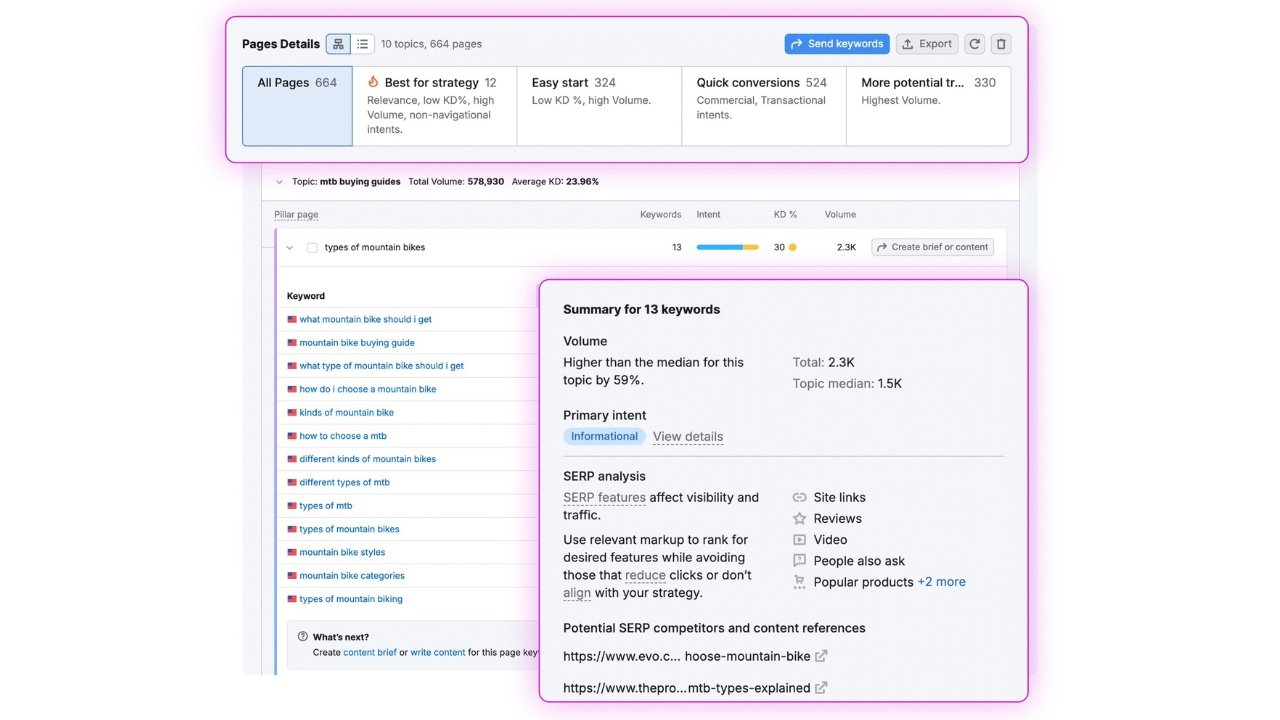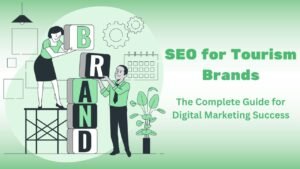
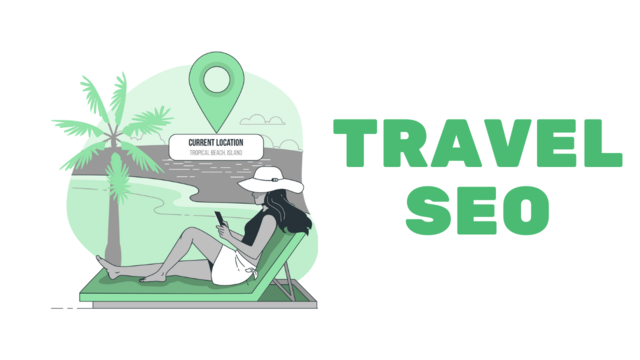
Travel SEO: Ultimate Marketing Guide for the Tourism Industry
Travel has undergone significant changes in recent years. Unstable currencies, combined with soaring wanderlust, highlight a key challenge: attracting customers online.
The emergence of search engines and the ability to research destinations has left travellers more self-reliant than before. Now, they’ll use Google, Bing, and even ChatGPT search results before travel agents.
With numerous travel sites online, making your site stand out is essential. A strong SEO strategy can boost your visibility and attract more customers in this fiercely competitive market.
In the highly competitive travel industry, a well-crafted travel SEO strategy is crucial. But what does it entail? Let’s explore.
Why SEO Matters in Travel Marketing
The goal in search engine optimisation is to get your content high up on the search results. Search engines perform a sophisticated job of determining whether your content is relevant to the user’s query.
SEO is all about search terms, also known as keywords. If you can match search intent and create a strong relevance between your product or content and a well-used search term, you’re engaging in the first step of great SEO practice.
If you are in the travel marketing sphere, you are aware of the intense competition in the industry. Reaching the top of search engine results pages (SERPs) can be pretty challenging. That is where a solid travel SEO strategy comes in.
Here’s how good SEO can help your business.
1. Boosts Visibility and Traffic
SEO works to get you better search engine rankings on the SERPs when potential customers are seeking destinations, experiences, or accommodations related to yours. Through various techniques, travel SEO enhances your website’s search visibility, increasing your chances of gaining consistent organic search traffic in a crowded market.
Additionally, AI-driven search traffic, influenced by platforms like ChatGPT, has surged by 527% in early 2025, reshaping how users discover content. This has created new opportunities for SEO to drive instant visibility on various platforms.
2. Increases Conversion Rates
Many customers search for specific terms, expecting one thing, only to quickly realise it’s not what they want or need. This relates to search intent, a solid keyword research strategy, and user experience.
Without these elements, you may see an uptick in bounce rates and lower conversion rates. The average bounce rate for the travel industry is 50%. However, with the correct SEO for travel and tourism businesses, there is a higher chance that casual visitors will convert into paying customers rather than just browsing.
3. Improves Brand Credibility and Trust
Users are seeking information that is reliable, clear, useful, and occasionally entertaining. Ranking in search results signals reliability and authority to potential travellers. But that isn’t enough.
When customers visit your website, they should see consistent proof of authority. This includes quality content, positive online reviews, a social media presence, fast loading speeds, and optimised images. All of these elements are part of quality SEO.
4. Reduces Reliance on Third-Party Travel Platforms
Many tourism agents and operators believe they must rely on third-party platforms, such as TripAdvisor, GetYourGuide, or Agoda, to drive organic traffic directly to their websites. This is not true with the help of advanced travel SEO.
These SEO strategies are designed to enhance brand control and user experience, eliminating the need to rely on online travel agencies (OTAs) altogether.
5. Provides Competitive Advantage and Market Adaptability
Travel SEO empowers tourism brands to quickly adapt to seasonal demands and market trends through keyword and content optimization. This allows them to stay ahead of competitors in search ranking, still using traditional methods, meaning you get the clicks and impressions first. As a result, you are more likely to get market leadership and be seen as a trusted authority in the field.
Keyword Research for Organic Traffic
Keyword research is the foundation for driving organic traffic to your website. It not only increases your chances of ranking higher on search engine pages, but also gets you in front of the correct audience looking for your services.
Why Keyword Research is Important
Keyword research is a pivotal part of structuring and targeting your content. Researching travel keywords reveals what your customers are looking for and what you should therefore try to rank for.
Using the correct keywords for travel and tourism also reveals how you should be telling your story. Tell the right story in the right way (using the right content and keywords), and you algorithmically start to target the customer you want.
(Example of Ahrefs’ keywords sorted by location)
What is a Keyword Funnel for Travel
A keyword funnel is a strategic approach to organizing and targeting keywords based on the stages of a buyer’s journey. It breaks down user search queries into three main stages:
- Awareness:Broad searches where users recognize a need or seek to understand a problem.
- Consideration:More focused keywords where users compare options before making a decision.
- Conversion: Highly targeted keywords that signal affirming intention, indicating that the user is ready to buy.
By mapping keywords to these stages, travel businesses can create content that meets users’ needs at each stage of the decision-making process, thereby improving visibility and guiding prospects toward conversion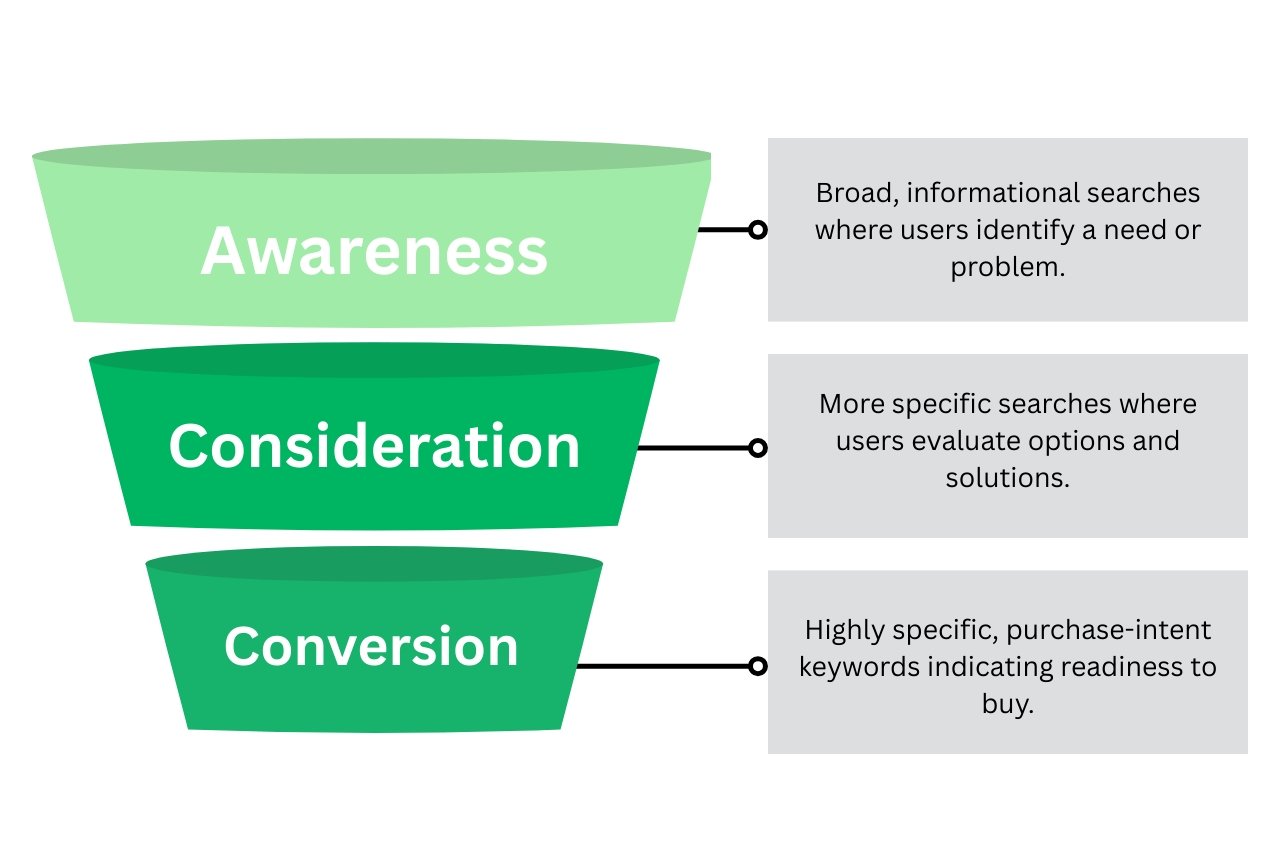
The Importance of Identifying the Keyword Intent
Properly identifying intent improves ranking success and leads to higher conversion rates by attracting the right audience at the right time.
The primary keyword intents are:
- Informational intent:These are searches made when people are looking for information and are researching before purchasing.
- Navigational intent:These search terms usually occur within the research stage, when users are looking for a particular website (often brand-related).
- Commercial intent:These are usually high-difficulty keywords with money-earning potential, usually when someone is towards the end of their research journey, just before a purchase.
- Transactional intent:These are high-earning keywords that someone searches when they are ready to buy.
Understanding whether users seek information, comparison, or are ready to buy allows the creation of content tailored to match their needs.
Things To Consider for Destination-Based Keywords
For destination-based keywords, it’s best to focus on specific locations combined with user intent. Long-tail and geo-specific keywords to capture targeted traffic while avoiding overly competitive generic phrases.
An example of these keywords is “family-friendly resorts in Bali” or “hidden hiking trails in the Swiss Alps.”
Things To Consider for Service-Based Keywords
These keywords describe the particular travel services, like “guided city tours” or “luxury airport transfers.” Ensure keywords reflect user needs at different journey stages, prioritizing those with high buying intent to capture potential customers actively searching for these services.
Understanding General SEO vs. Travel SEO
There is no one-size-fits-all solution in SEO. Instead, it is an amalgamation of techniques from various sectors of the internet, ranging from technical problem-solving to images and videos.
Here is a quick breakdown:
General SEO
SEO focuses on optimisation strategies specifically for search engines, such as Google, Bing, DuckDuckGo, and Yahoo, to name a few. Typically, SEO specialists focus their efforts primarily on Google’s algorithm, as it dominates the global search engine market. However, these general strategies are effective on other search engines, although their ranking systems differ.
A general SEO strategy involves targeting high-traffic and relevant keywords, as well as optimizing site architecture. It also involves creating high-quality content and establishing high-quality backlinks to help attract a broad yet targeted audience. Its techniques are relatively wide and can thus be applied to a range of sectors and industries.
A Worthy Mention: AI SEO (AEO, GEO, etc.)
Still relatively new to the block (and therefore likely to evolve many times over the years), AI SEO employs a slightly different set of techniques. This SEO type helps your content reach the top of the SERPs, including search engines like Gemini and ChatGPT queries.
Answer Engine Optimisation (AEO) and Generative Engine Optimisation (GEO) are practices that optimise content to appear in AI-driven search engine results and as answers in AI engines.
 Travel SEO
Travel SEO
General and AI SEO paint with a general brush and cover multiple sectors. And, while travel and tourism SEO will use many of the same techniques, it cannot fully maximise the potential of travel-focused SEO.
Instead, these travel search marketing campaigns require a more nuanced approach, focusing on travel intents, seasonal updates, and location-specific SEO strategies. This means targeting tourism-specific keywords, for example, ‘luxury hotels in Rajasthan’ and ‘summer vacation ideas’.
Travel SEO also typically emphasises local and international SEO, user experience, and inspirational content creation. But we’ll dive into this topic much deeper soon!
SEO Factors That Impact SERP Rankings in the Travel Industry
Certain ranking factors influence how organic search engine algorithms evaluate travel industry content. Of those, these are considered the most important.
Bear in mind that from time to time, the algorithms evolve and become “smarter”. So these sometimes change very slightly and may require regular content optimisations and updates.
1. Travel SEO Competition
It’s worth knowing what you’re competing against. All travel-related businesses are competing for those top SEO rankings. There are also influencers, personal bloggers, and recreational services looking for a slice of the same audience.
The natural advice from a travel SEO agency is: be specific about what you offer. There’s a bit more to it than that. The fact is that most people engaging with search engines do so with very general terms, at least initially.
How to Fix it:
Your ultimate goal with travel SEO is to get to the top of a search engine’s results. This will place you on or near the top of an audience’s choices. The specific focus of your content should therefore reach out to that audience in an organic way.
Of course, good travel SEO helps put you top of mind if you rank well. And then, when users engage, you can provide a great user engagement experience.
2. High-Quality Content
A page that promises a particular kind of quality content should deliver that. In other words, if a user arrives looking for A but instead gets a big sales pitch with everything but A, they will leave. Search engines will see this as a sign that your content is irrelevant to the search term and will rank you lower.
Luckily, Google often tells you precisely what it wants from your content through its algorithm updates aimed at improving search results. Starting in 2003 with the Florida Update, the search engine giant has set out regular updates, essentially wanting you to put out quality and credible online content. It mainly discourages manipulative practices and low-effort slop from its users.
Google still regularly has algorithm updates:
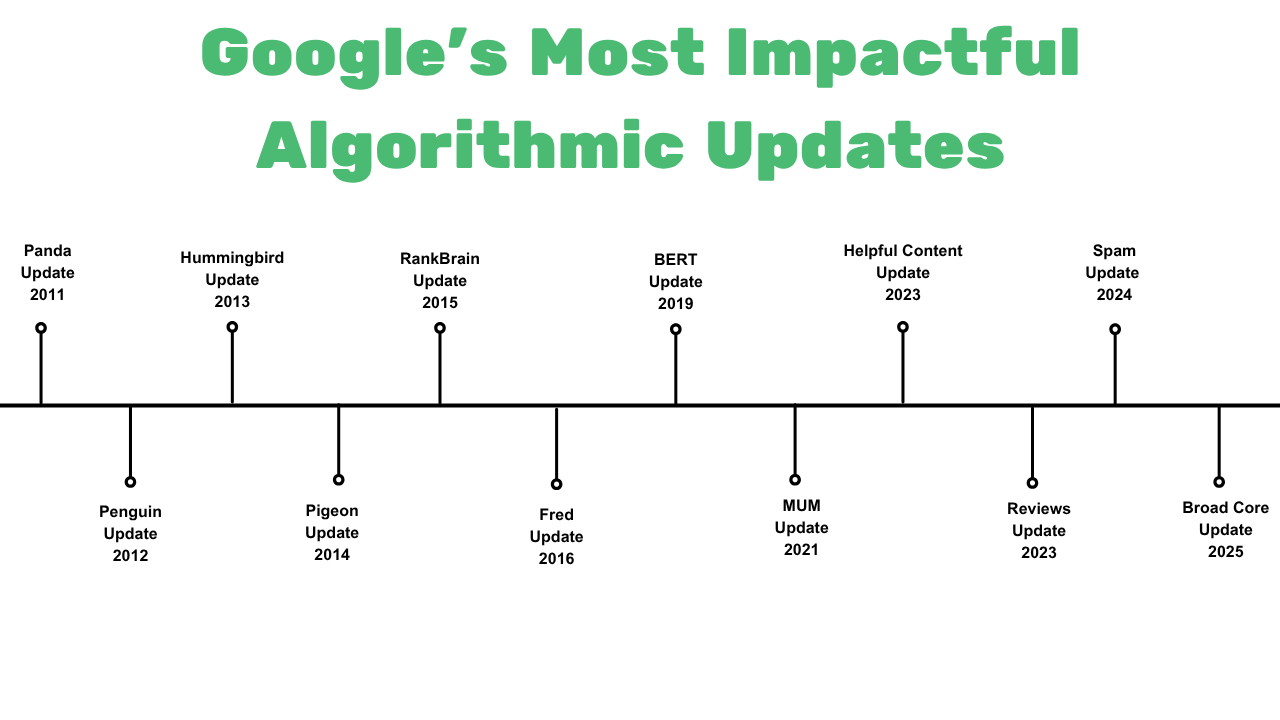 Google’s Helpful Content and Spam Updates are the most impactful algorithm updates in this aspect. These aim to reward websites that produce original and helpful content that answers users’ needs and questions. Any sites that have thin content, link spam, and signs of domain and site reputation abuse will now be penalised.
Google’s Helpful Content and Spam Updates are the most impactful algorithm updates in this aspect. These aim to reward websites that produce original and helpful content that answers users’ needs and questions. Any sites that have thin content, link spam, and signs of domain and site reputation abuse will now be penalised.
How to Fix it:
This doesn’t mean you have to delete all outdated travel content, such as guides and activity blogs, from your website and start over. On the contrary, you may be doing more harm than good by doing this. Instead, consider a content optimisation strategy that updates outdated content with more suitable keywords and links.
Bulleted or numbered lists within articles also enhance readability. They can help your content snatch the featured snippet positions. Provided, once again, that they are relevant and seen favourably by search engines.
3. External and Internal Links
Links are a huge ranking factor in SEO as they help establish site architecture and improve crawl efficiency. There are generally two types of helpful links: internal and external.
Internal links are any hyperlinks that connect pages on your site to other pages within the same domain. Think of these links as pathways that allow users (and search engines) to easily navigate your site.
External or outbound links are hyperlinks that point from your website to different domains. These links should ideally be to authoritative sites that have a high authority ranking on the search engine to signal to your audience that your site is connected to authoritative resources.
How to Fix it:
Travel sites with a massive volume of pages will find this especially helpful. Linking destination activities, guides, and accommodation pages to location subpages will not only improve navigation but also enable users to view relevant content, thereby engaging them more and increasing your conversion chances.
Creating outbound links is an excellent SEO strategy for tourism boards, as it allows you to link out to official national parks, organisations, restaurants, attractions, and events sites, strengthening industry networking and partnerships.
4. Referring Links and Domain Authority
Referring links are backlinks from other domains pointing to your website’s pages. Sites with high domain authority are incredibly valuable because they signal to search engines that your content is valuable and relevant.
A link-building strategy is a highly recommended component of an SEO strategy. Ideal referring links for travel sites are those from tourism boards, travel blogs, and news outlets, as these increase your site’s credibility. A site with a higher domain authority shows you’re an expert in your field and will push your content to better positions in search results.
How to Fix it:
Reach out to brands, news outlets, and even influencers to build a strong and diverse portfolio of referring domains. This ensures that your content is well-regarded across platforms, which will help build domain authority. This is crucial for outperforming your competitors.
5. Content Relevance
Proper content marketing requires relevant content. While no longer a ranking factor, high word counts typically indicate some topical relevance and authority, with many high-ranking articles typically being around 2,000 to 3,000 words.
However, it is also essential that while Google can penalise thin content, it is far more critical that your content remains relevant to the topic. If a 3000-word post on a topic that could be adequately covered in 1000 words, it may result in irrelevant content being added.
Google evaluates content relevance based on how your webpages correspond to the underlying content and keywords. This is to ensure you are answering users’ questions clearly and emphasising topic depth.
How to Fix it:
Conduct a thorough content audit to map your content and sort it by its relevance to your site. Does it offer helpful advice or value? Or is it just fluff? Is there any duplicate content?
From there, choose which content is worth optimising and which topics need more high-quality content. Cover all aspects of targeted travel topics, from industry news to FAQs.
Key Aspects of SEO for Tourism Brands
Chances are, you already have a travel website. If you’ve had one for a while, you may already be creating content about your travel industry service or product. This content could be relevant and would be a shame to lose.
However, your site may also be outdated, which means it’s likely a bit behind the technical curve. Why not do a website audit?
A comprehensive travel website SEO audit will identify problematic links, duplicate content, sub-optimal website structure, and insufficient travel SEO keywords for ranking purposes. This audit will provide the framework for the way forward. After all, this is where we ultimately want your customers to arrive.
1. On-Page SEO for Travel Websites
On-page SEO is everything you see on the (web)page. This includes content and how a webpage looks to users and search engines. There are a few ways to optimise these pages for your travel business.
Heading Tags
Heading tags are elements like main and subheadings (H1, H2, H3, etc.). These help structure your webpage to enable users to easily understand the main topics of the page, allowing them to scan long-form content more effectively. This hierarchy also helps Google efficiently index your content and boost visibility for travel-related searches.
Meta Data
Metadata coding makes your site more relevant to search engine bots, guiding them and travellers through your content efficiently. Metadata includes:
- Meta descriptions
- Title tags
- Headers
- Alt text
- Schema markups
- Blog authors
- Social media tags
- Meta robots tags
(Example of SEO-optimised title and meta-descriptions vs. non-optimised title and meta-description)
Internal Linking
Internal links connect pages within your website. These are different from outbound links, which originate from webpages other than your own.
The point of internal links is to guide both search engines and users to related content on your site. This helps distribute page authority and signals topical relevance across pages. If you do this strategically, you can reduce the bounce rate on your website, as it keeps users engaged.
Create Illustrative Descriptions
Using visual language and descriptions of destinations makes it easier for guests to imagine themselves in these scenarios because they now have an emotional connection. This, combined with precise SEO practices, transforms casual browsers into eager bookers, driving higher conversions and making your travel brand their ultimate choice.
2. Off-Page SEO
Off-page SEO for tourism marketing refers to any activity that improves your website’s rankings among travellers and search engines without altering the website itself.
Social Media and Influencer Engagement
Social media campaigns are essential for travel SEO because they amplify your audience reach across different platforms, not just search engines. Collaborating with influencers helps build social proof and may help in getting more impressions and clicks. Social sharing also leads to more backlinks from other sites, enhancing your domain’s ranking potential and trustworthiness.
Encourage Positive Customer Reviews
Customer reviews serve as social proof for potential customers who are still deciding whether to book your services. Receiving numerous positive reviews conveys the message that your services, accommodations, or tours are credible and trustworthy. Google also values review count and ratings as key local ranking factors.
(Example of customer reviews for Cape Coliving)
3. Mobile Optimisation
Recent studies show that there are about 4.32 billion active mobile internet users. Of that, approximately 96.3% of users access the internet using their mobile phones. So, optimising your website to work well on mobile phones is critical.
Mobile friendliness is also an important factor. This includes resizing buttons, reducing text size, and horizontal scrolling.
Responsive Design
Responsive design means that your website resizes comfortably to different devices and screen sizes. This enhances usability for users and improves website navigation by optimizing content for smaller screens, compressing images, minimizing code, leveraging browser caching, and adding adequate spacing around buttons and clickable elements.
Streamline the Booking Process
Mobile-friendly features can improve bookings by making the process seamless and quicker for users. Adding features like one-click booking, secure online payments, and even saving payment details for future bookings can speed up the reservation process and build brand loyalty.
3. Technical SEO Issues in the Travel Industry
Technical search engine optimisation is all about the coding structure of your web pages. This is primarily about ensuring your content and site are SSL-certified, have no duplicate content, load effectively, and are readable on all platforms.
Site Speed
One of the top things to look for in technical SEO for travel is how fast your site loads because this will directly impact bounce rates and user experience. Google favours websites that load quickly, enhancing crawlability and indexation, which boosts your organic visibility.
(Example of loading speed reports from Google’s PageSpeed Insights)
Travel Structured Data Markup
Structured data, also known as schema markup, is a set of code that helps Google better understand your page’s content. For schema markup for travel agencies, these can include reviews, flight details, accommodation details, and FAQs.
By adding structured data, your site gains a few benefits:
- Rich snippet features
- Improved machine learning
- Greater search visibility
- Higher click-through rates
- Higher chance of getting voice search queries
- Ability to control your information
4. Link Building for Tourism Brands
Link building is an SEO strategy that emphasizes the importance of acquiring high-quality backlinks from authoritative sites. High-quality link building should be a component of a comprehensive SEO content marketing strategy.
Identify Broken Links
While building links is important in SEO, it’s also essential to fix broken links already on your sites. This is because broken links harm both search engine rankings and user experience. Search engines rely on links to crawl and index your site, and broken links hinder this process and reduce your visibility.
Broken links also show poor site maintenance, which will decrease your site’s credibility and authority with your audience. As a potential client willing to spend thousands on travel experiences and accommodations, seeing a professional and credible website is essential.
Directory Submissions
A trusted local directory submission is crucial for link building in the tourism industry, as it offers high-quality backlinks from niche-related directories. This improves visibility, signals credibility to search engines, and drives targeted traffic.
Here are a few high-authority directories:
- TripAdvisor
- Yelp
- Expedia
- Africa Tourism Connect
- Foursquare
- Hotfrog
- MerchantCircle
- B2B Yellow Pages
- eLocal
News and Press Releases
A mention and link on a major news or travel site with good domain authority can not only drive organic traffic but also significantly increase your authority ranking with search engines as well. When travel brands distribute newsworthy press releases, such as the launch of new destinations, services, or events, they increase their chances of being featured by journalists.
Even if press release links are often “no-follow,” the earned media coverage leads to high-quality backlinks, signalling relevance and authority to Google.
5. Local SEO for Travel Businesses
Local SEO is an often-ignored but vital aspect of new digital marketing. By doing something as easy as using local keywords, you can target local searches and gain organic search results.
Consider this scenario: “You’re visiting a town, and you want to know whether there’s a nearby restaurant, hotel, or other services. You employ your mobile to check what’s in the area, and services like Google Maps assist you.” Local SEO taps into this need.
Optimise your Google My Business Profile
The first step to gaining local traffic is to make sure that your Google My Business Profile (GMB) is updated and optimised. This allows travel agencies and companies to rank for location-based keywords, increasing their domestic online presence. A well-put-together profile also increases trust and credibility for your business.
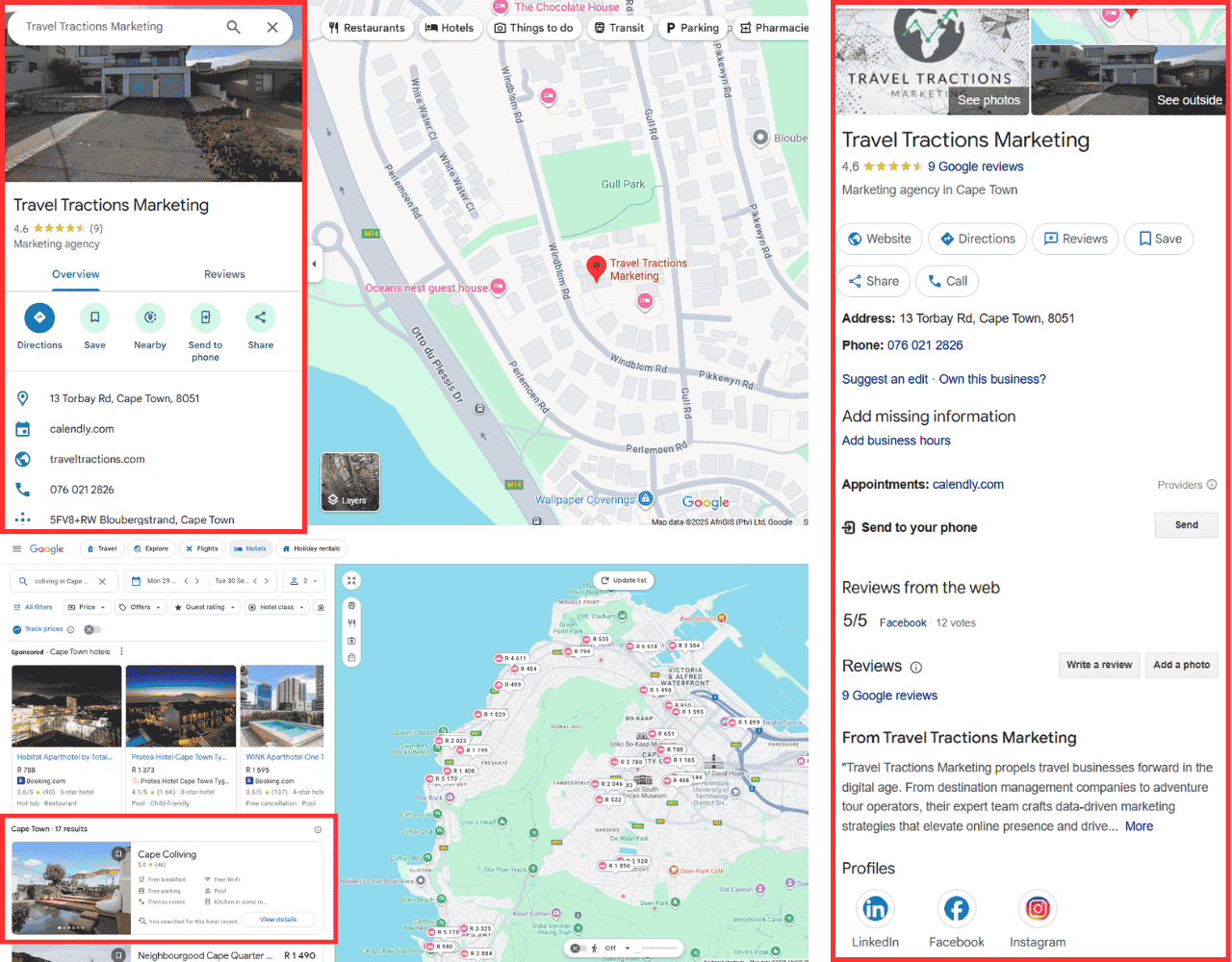 (Examples of different ways businesses can be displayed on GMB)
(Examples of different ways businesses can be displayed on GMB)
Local Landing Pages
Create landing pages focused on specific locations, such as cities or neighbourhoods. This helps narrow down people’s searches and increases the chance of them getting exactly what they are looking for.
Partner with Local Businesses
Although it may seem trivial in the grand scheme, networking with local businesses can actually help your SEO efforts. By collaborating and sharing guest posts, you create backlinks and demonstrate to Google that you are a credible source, recommended by other businesses.
 6. Content Strategies
6. Content Strategies
In many respects, this is the meat of the travel SEO meal. Content marketing is all about providing content that is interesting, engaging, and ultimately presents your travel business in its best light. In your case, that may be to sell flights, hotel rooms, or travel gear.
What this means is that the page your potential customer lands on should seldom drive the hard sell. Instead, it should address the reader’s question or concern.
Keep it Fresh
Content on your site should remain fresh and relevant to ensure users return time and again, looking to you as an authoritative source. To reduce the number of optimisations you need to do, consider opting for evergreen content, which can remain relevant for many years.
Tip: Read our content marketing ideas for travel agents to help you structure your content.
Topic Clusters
Creating topic clusters is an effective way to plan how to group relevant and related themes. This could be categorized by destination, type of accommodation, or travel experience.
For travel users, topic clusters enhance the user experience. These provide easy navigation through related, detailed travel content, keeping visitors engaged longer, reducing bounce rates, and building trust in your brand as an authoritative travel resource.
The internal linking between pillar pages and cluster pages distributes SEO value across your site. By doing this, you can enhance crawlability and help search engines better understand your site’s structure and topic relationships.
(Diagram illustrating how topic clusters work)
Learn from Top Competitors
Fake it until you make it. See what your close competitors are doing, then emulate and elevate it to make it relevant to you. Through thorough research, you’ll be able to identify the keywords they’re targeting, their content formats, user engagement tactics, and publishing frequency, as well as how these factors contribute to their ranking potential.
SEO Tips For Travel Websites
Assuming you now have a travel website that is SEO-friendly, relevant, and attractive with lots of content, the focus moves to building credibility and authority.
Focus on User Journey
It’s worth taking note of a very intriguing revelation from Google, the world’s top search engine. Their research suggests that travel-interested customers essentially have four emotional and psychological “moments” on their journey to committing to travel.
- Dreaming: It all starts with the “maybe I should look into going here” mind.
- Planning: When something has caught the eye, the possibilities are being explored.
- Booking: This is when they have committed to travel.
- Experiencing: Once they are actually at their destination, is the experience pleasant or not?
Google suggests that travel industry-focused content addressing each stage of the traveller’s journey increases your chances of engagement. Think of it as casting your net wider but with a tighter mesh to capture more types of “fish”.
Getting Onto the Right Platform
The focus of your campaigns and the content you create is mainly dependent on what you’re trying to achieve. For example, some might feel their brand is better suited to platforms such as Instagram or YouTube, especially if they can afford great-looking image and video content.
Another brand might want to talk through long-form, readable content on a blog. The advantage here is that organic traffic is driven directly to a site for that content.
Both approaches, in their own way, build brand authority. And both aim to connect visitors with their offerings. It depends on what your objectives are. Either way, careful curation of the SEO element of this content is essential.
Keep an Eye on New Markets
Market research is still an essential component of a digital marketing strategy. Applying the insights from the data to your SEO strategy could be a good idea.
For example, is the outbound tourist market from China increasing rapidly? Why not consider content (and SEO, accordingly) to attract those eyes? Discovering your audience’s interests and addressing their needs in your content can yield significant benefits.
Please keep in mind that your product needs to be prepared for any anticipated shifts in the market, as well as in your content offerings.
Common Travel SEO Strategy Mistakes & How to Avoid Them
Even seasoned experts can make these common SEO mistakes. Here’s how to avoid them.
1. Not Optimising for Mobile Devices
Something to bear in mind: Mobile is by far the biggest usage node for internet and search engine traffic. SEO can be tailored to target mobile users in specific cases. Again, this depends on whether you feel your audience is more likely to engage in this way.
2. Create Content of Poor Quality
More words don’t necessarily mean better content. Google rewards helpful content that follows its EEAT (Experience, Expertise, Authority, Trustworthiness) and YMYL (Your Money or Your Life) frameworks. Conversely, you are more likely to be penalised if you create thin content that lacks originality.
Focus on creating in-depth and original content that thoroughly addresses the topic. Aim to also answer potential follow-up questions the reader might have, include relevant details, data, and expert insights, and structure your content clearly with subheadings.
3. Ignoring Search Intent in Favour of Related Keywords
When examining keyword data, it is crucial to identify keywords with high search volume and low difficulty. But it is also important to remember search intent when doing so. Think of it as the “why” behind every search or the reason a user types a query. It’s no use targeting ‘best clubs in Spain’ if your website is about safaris because that is not what your users are searching for.
4. Over-Optimising
Similar to the phrase “if it ain’t broke, don’t fix it”, it is possible to do too much optimisation to the point that it’s doing the opposite. Here’s how you may have unintentionally over-optimised:
- Adding keywords to every image’s alt text. This is considered keyword stuffing.
- Adding too many keywords in title tags and meta keywords.
- Building links but acquiring irrelevant backlinks.
- Focusing on search engines instead of humans first.
- Focusing on doing everything “right”, but ignoring user experience.
5. Index Bloat
Index bloat is when a website’s search engine index contains an excessive number of pages, especially of low quality, which spreads the crawl budget thinly. Instead, plan topic clusters and only create valuable content for your users.
6. Not Doing Seasonal Content Updates for Destinations
Search engine optimisation for travel businesses thrives on keeping content fresh and seasonally relevant. Travel restrictions and laws are also constantly changing, so keeping your users informed helps put you as industry leaders.
7. Doing Everything Yourself
Don’t be afraid to streamline your travel SEO efforts with the help of AI. Google has come out to say that it rewards high-quality content, no matter how it is produced. This means you can write content and automate tasks on your site with the assistance of artificial intelligence and face no repercussions as long as it follows the EEAT guidelines.
SEO Tools We Highly Recommend
As SEO specialists with over a decade of experience, we’ve dealt with several tools. These are our top picks:
Google Analytics 4
This platform enables you to collect website and app data, helping you create concise insight reports. You can monitor user traffic, track user engagement trends, and obtain customer information, such as country, age, gender, and language, for example.
Pricing: Free
Google Tag Manager (GTM)
GTM is a tag management system that lets you set up snippets of marketing code that track user actions and collect data on your site without altering its code. It enables you to monitor:
- Link clicks
- Button clicks
- Form submissions
- Call to action (CTA) performance
- Cart abandonment
- Scroll behavior
- Video views
Pricing: Free
Google Business Profile
A Google Business Profile allows you to manage your travel website’s online presence on Google Search and Maps. It displays your business details, including operating hours, addresses, contact information, and website links, making it easier for people to find you.
Pricing: Free
(Google My Business Profile of Travel Tractions as seen on Google SERPs)
Google Search Console (GSC)
Google Search Console is an insight tool that helps you monitor how your site is doing on Google search results. It allows you to maintain, monitor, and troubleshoot issues about how your site is crawled and indexed.
Pricing: Free
Ahrefs
This comprehensive tool enables you to conduct keyword research, competitive analysis, site audits, and backlink analysis all in one place. It is a helpful tool that helps you monitor your website’s performance and identify areas for improvement.
Pricing: Paid, but offers free tools
SEMrush
SEMrush is similar to Ahrefs in that it allows you to monitor your site and conduct keyword research. However, if you plan to do PPC, it is more advanced than Ahrefs as it will enable you to analyse competitor ad campaigns, copy, and keywords.
Pricing: Paid
Screaming Frog
Screaming Frog is a technical tool SEO experts use to crawl websites to identify issues like missing metadata, broken links, and schema markup issues.
Pricing: Paid, but offers free tools
FAQs About SEO Strategies for Travel Websites
Still have some questions around the role of SEO in tourism? Find clear, expert answers here to help you understand this niche industry.
Why Is SEO Important for the Travel Industry?
It helps drive organic traffic, acquire qualified leads, and gives you a competitive edge in this crowded market. These days, many people’s first step when planning a trip is to pull up a search engine like Google or ChatGPT. Therefore, having your content in the top positions on search engine results pages is crucial for online visibility. Having a solid SEO strategy that aligns with user intent can help you do that.
Is SEO expensive?
It can be, but it doesn’t have to cost a lot of money. By leveraging organic keywords and local SEO, you can target the right demographic and increase your chances of successful conversions for almost no cost at all.
What Is the Primary Goal of SEO in Tourism Destination Marketing?
The top goal for travel SEO is to increase organic visibility, which translates to impressions, clicks, and ultimately, conversions. This way, you are at the top of your ideal client’s mind, whether they’re searching for a vacation in the near future or planning ahead.
What Are SEO Keywords for Travel?
The most relevant keywords for travel SEO are phrases that travellers will use to find destinations, activities, accommodations, and travel tips. To tap into a more specific market, use a mix of short- and long-tail travel-related keywords like ‘private guided tours’ and ‘private guided safari tours in Kenya’, for example. These help pinpoint search intent and target users at various travel planning stages.
Wrapping Up Travel SEO
If you understand travel SEO to be something applied to a travel website, you’re only scratching the surface of your potential to reach future clients.
Effective digital marketing is broad, encompassing travel website SEO and driving organic and paid web traffic (PPC ads). However, a good SEO strategy also incorporates valuable backlinks, effective content creation, qualified leads, local SEO, and more.
The biggest win is that you can take your foot off the pedal and your SEO will continue to bring you traffic for months and even years to come.
The customer journey is well-researched, and applying the proper travel SEO techniques to improve your chances is well worth the effort. Your potential customers are out there, and chances are they’re using a search engine to help them make their next travel decision.

